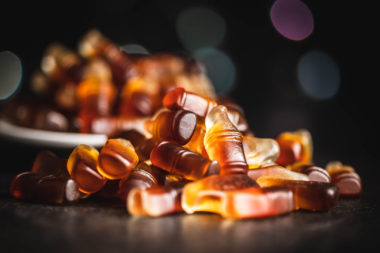

Why do so many female football players suffer from cruciate ligament injuries?
Join the Fascia Conversation Today!
Anterior cruciate ligament injuries are common injuries in competitive sports. According to American research, the risk of injury is 4 – 6 times higher in female athletes than males.
In Sweden, there were recently reports of extremely large number of cruciate injured female football (soccer) players, when competitive football season started up after the long break due to Covid19.
That there will be many injuries after a long break and perhaps the training may not have been as usual, is not so strange. Tendons, ligaments, muscle fascia, muscles and all tissues adapt to load and a milder exercise means that the tissue decreases in size, as it is not loaded to the same extent and needs to be just as strong.
But why do women suffer more often from ligament injuries?
It is obvious differences in circulating hormones in men versus women. Researchers have theorized that elevated estrogen levels in females may be a potential cause for the increased incidence of cruciate injury.
The hormone estrogen has a major effect on the composition of collagen, which affects the fascia, tendons and ligaments and more.
The enzyme lysyl oxidase contributes to a stable collagen, as it creates crosslinks between the collagen fibrils so that the collagen fibers become firmer and do not slide too much against each other. A lot of crosslinks provide a more stable, but also stiffer, collagen fiber and fewer bonds provide a softer, less stable collagen.
According to Lee et al, 2015, the enzyme lysyl oxidase is inhibited by the hormone estrogen, which means that women of childbearing age have a weaker collagen. This means that women sprain more easily or, for example, get cruciate ligament injuries, but are less likely to suffer from muscle strains as the collagen of the tendons and fascia is more elastic.
According to Fede et al, 2019. estrogen reduces the synthesis of collagen I and instead increases the formation of collagen III and fibrillin. It also means a softer and less stable fascia. The advantage of a more elastic, softer tissue is that the muscle fascia becomes more flexible and does not suffer from stretch marks as easily. On the other hand, women suffer more from back pain, especially during pregnancy, when the tissue is weak, and the muscles easily become overwrought and the body becomes unbalanced.
Production and degradation of collagen, formation of new tissue, increases under load, but here there is also a difference between the sexes. The stimulating effect on collagen synthesis after exercise is also lower in women of childbearing age.
After menopause, when estrogen levels fall, collagen I production increases sharply, and collagen III decreases. Then the fascia instead becomes stiffer, albeit more stable, which can also create back pain and other myofascial pain due to too “tight suit” that generate compression to pain receptors in the fascia.
Exercises and treatment of the fascia and muscles to keep the flow and nutritional yield to the cells and get the body in balance can reduce the problems!
Further reading
Referenses
- Balachandar et al, 2017. Effects of the menstrual cycle on lower-limb biomechanics, neuromuscular control, and anterior cruciate ligament injury risk: a systematic review.
- Fede et al, 2016. Hormone receptor expression in human fascial tissue.
- Fede et al, 2019. Sensitivity of the fasciae to sex hormone levels: Modulation of collagen-I, collagen-III and fibrillin production.
- Herzberg et al, 2017. The Effect of Menstrual Cycle and Contraceptives on ACL Injuries and Laxity
- Kjær et al, 2009. Mechanical loading, tendon, collagen synthesis, tissue adaptation, fibroblast, growth factors, exercise, physical training
- Lee et al, 2015. Estrogen Inhibits Lysyl Oxidase and Decreases Mechanical Function in Engineered Ligaments.













































